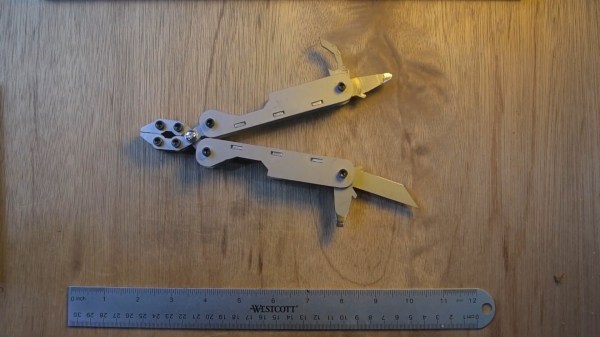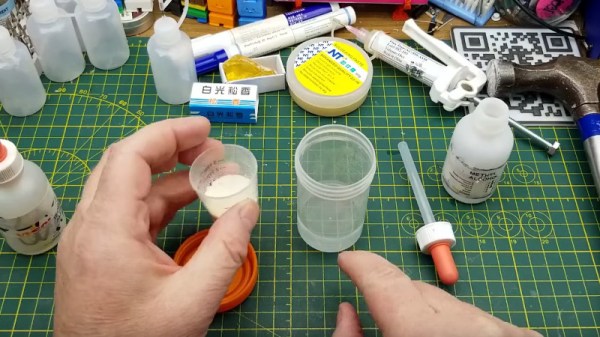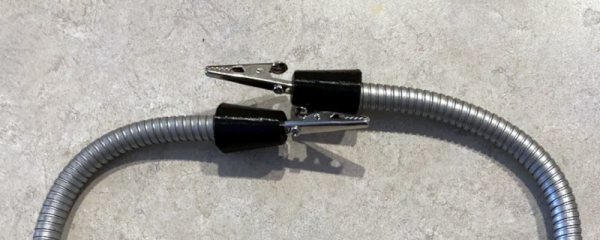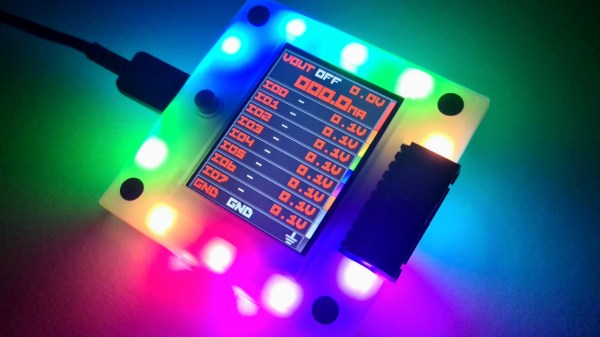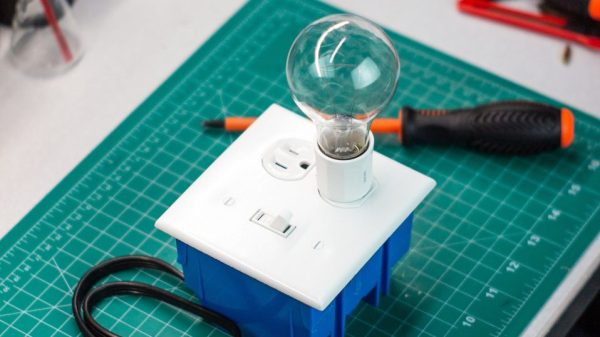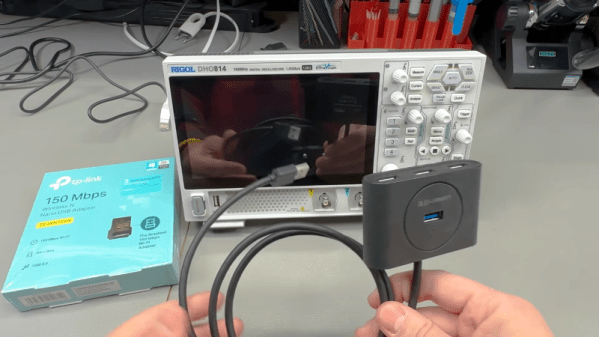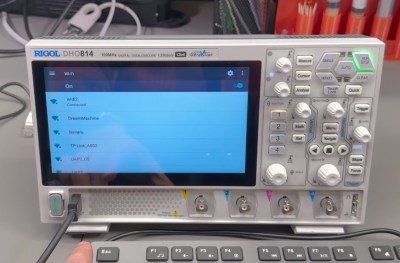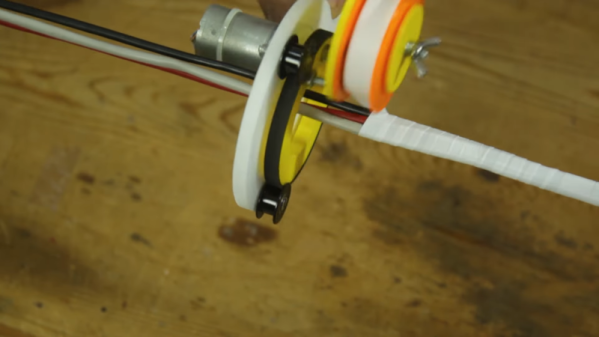Sometimes, you just have to see whether something can be done. Such is the case with [ToolTechGeek]’s flat-pack metal multi-tool build. Can an entire multi-tool be made with only flat pieces of laser-cut metal and fasteners? It would seem so, yes. And quite nicely, too, as you’ll see in the video after the break.
[ToolTechGeek] started by designing all the parts in Inkscape, and then made a few 3D printed versions to check fitment before committing to laser-cut metal. Once they had the pieces cut, everything came together nicely except for a few tabs that connect some of the parts together. These just had to be filed down a bit.
So now, [ToolTechGeek] has a handy set of pliers, flat- and Phillips-head screwdrivers, a knife, and a bottle opener all in one place. Although the pliers don’t have teeth, they still do a fine job of removing nuts and the like. Be sure to check out the final product and see it get put to the test.
No use for such a thing? Maybe you’d prefer an NFC multi-tool.

